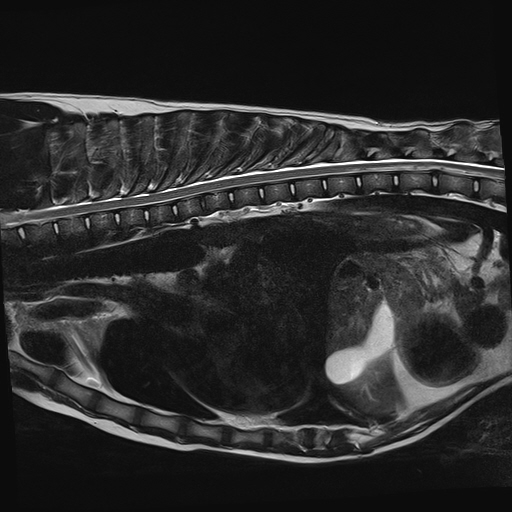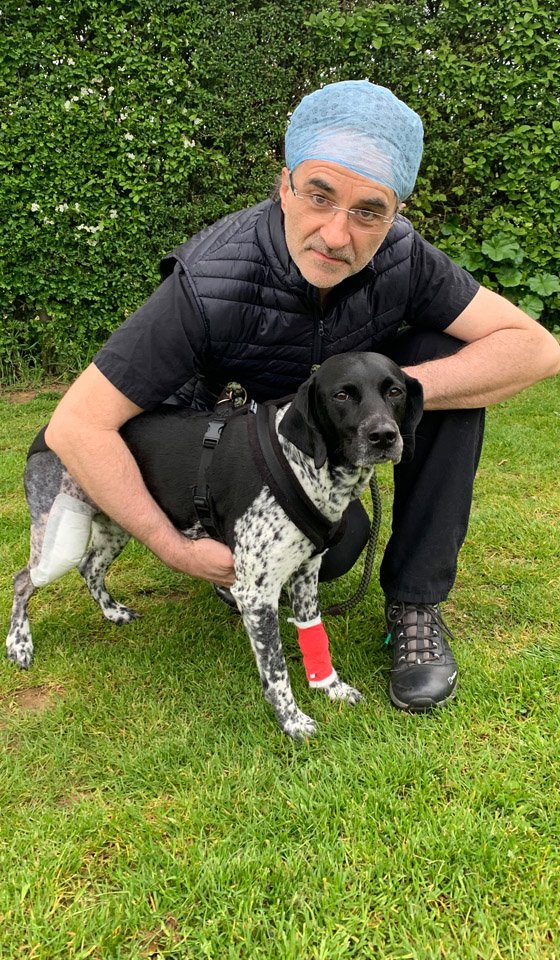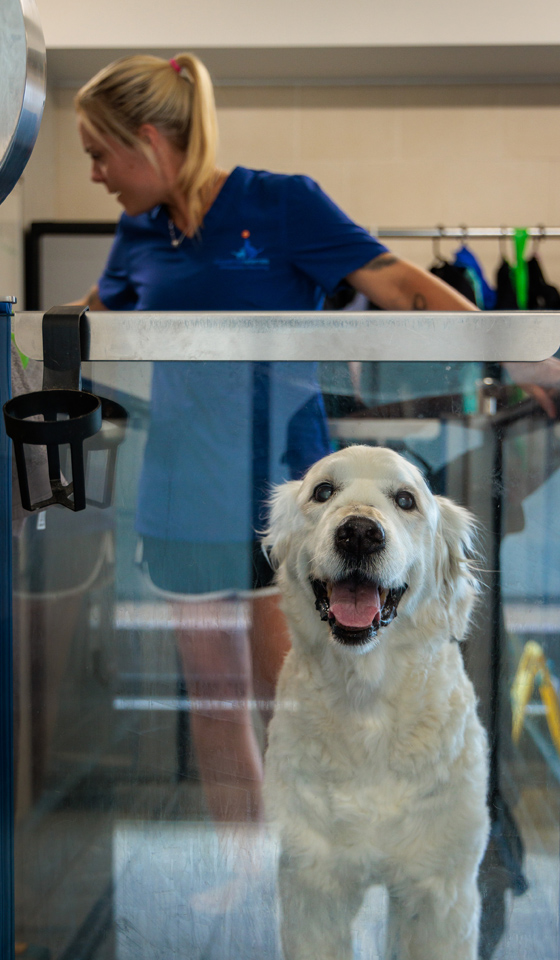What is fibrocartilaginous embolism (FCE)?
Fibrocartilaginous embolism is a sudden onset spinal cord injury as a result of a sudden blockage of a vessels blood supply to an area of the spinal cord.
Fibrocartilaginous emboli are believed to be associated with intervertebral discs. Intervertebral discs (IVD) permit stability and support of the spine whilst allowing movement and distributing loads between the bones of the spine (the vertebrae). To perform this function the IVD has two components: an inner cartilaginous bag called the nucleus pulposus; and an outer multi-layered ligament that contains the nucleus, called the annulus fibrosus. The embolising material is believed to be fibrocartilage from the nucleus pulposus.
How can I tell if my dog has a fibrocartilaginous embolism?
The clinical signs are highly variable and they are related to dysfunction of the spinal cord through focal loss of oxygen supply for a short period. Young to middle-aged non-chondrodystrophic large breed dogs are often affected, however, dogs of any breed or age can be affected, as well as cats, horses, pigs and people.
The clinical signs are very sudden in onset and non-progressive:
- Pain is not a feature of fibrocartilaginous emboli although some dogs may vocalise when the problem first happens.
- As a general rule, the clinical signs are usually asymmetrical (i.e. affecting one side) and their severity relate to the degree of spinal cord injury and subsequent dysfunction. Clinical signs may vary, ranging from paresis (i.e. weakness) to complete paralysis (i.e. plegia). It may affect one limb (mono-paresis/plegia), one side of the body (hemi -paresis/plegia) or pelvic limbs (para-paresis/plegia). The most severe cases may become unable to urinate.
What is the cause of a fibrocartilaginous embolism?
Why fibrocartilaginous emboli occur is not fully understood. We know that a spinal cord injury is the result of a sudden blockage of a vessels blood supply to an area of the spinal cord by a fragment of ‘fibrocartilage’ – a substance that seems to originate from the nucleus pulposus of the intervertebral disc. We assume that a traumatic incident (minimal trauma like heavy exercise, jumping for a frisbee, etc) causes part of the nucleus pulposus to embolise into a blood vessel. The loss of blood supply and reduced oxygen tension causes infarction (i.e. tissue death) of the spinal cord. Often other blood vessels open to facilitate collateral circulation to the spinal cord and the oedema surrounding the infarcted area resolves, explaining how dogs can recover relatively soon after the accident.
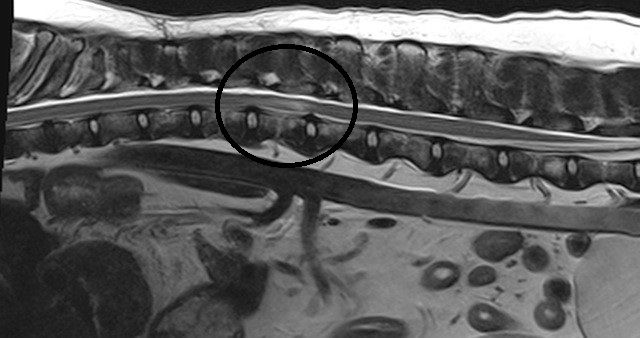
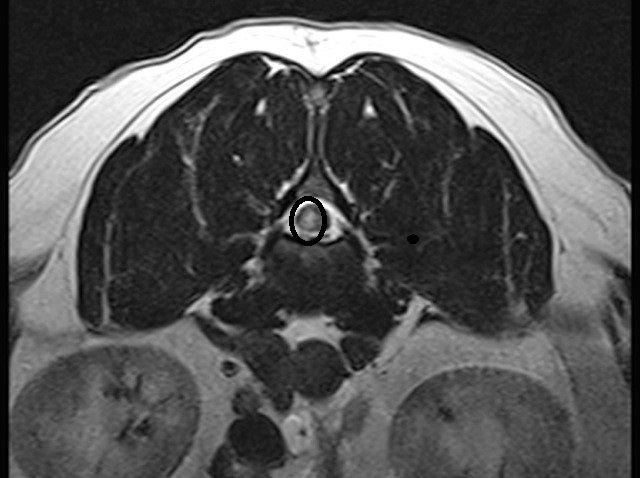
How is fibrocartilaginous embolism diagnosed?
Fibrocartilaginous emboli may be strongly suspected on the basis of the acute onset, non-progressive clinical signs; however diagnostic imaging is required to confirm the diagnosis.
We have digital radiography, MRI and CT scanners at Fitzpatrick Referrals managed by our advanced imaging team, however, MRI is the most indicated advanced imaging technique in evaluation of FCE. Dogs must lie completely still for their MRI scan and this is only possible with general anaesthesia. Your pet will have dedicated one-to-one care during their MRI or CT scan by one of our nurses from the prep nursing team who are all trained and experienced in anaesthesia and sedation.
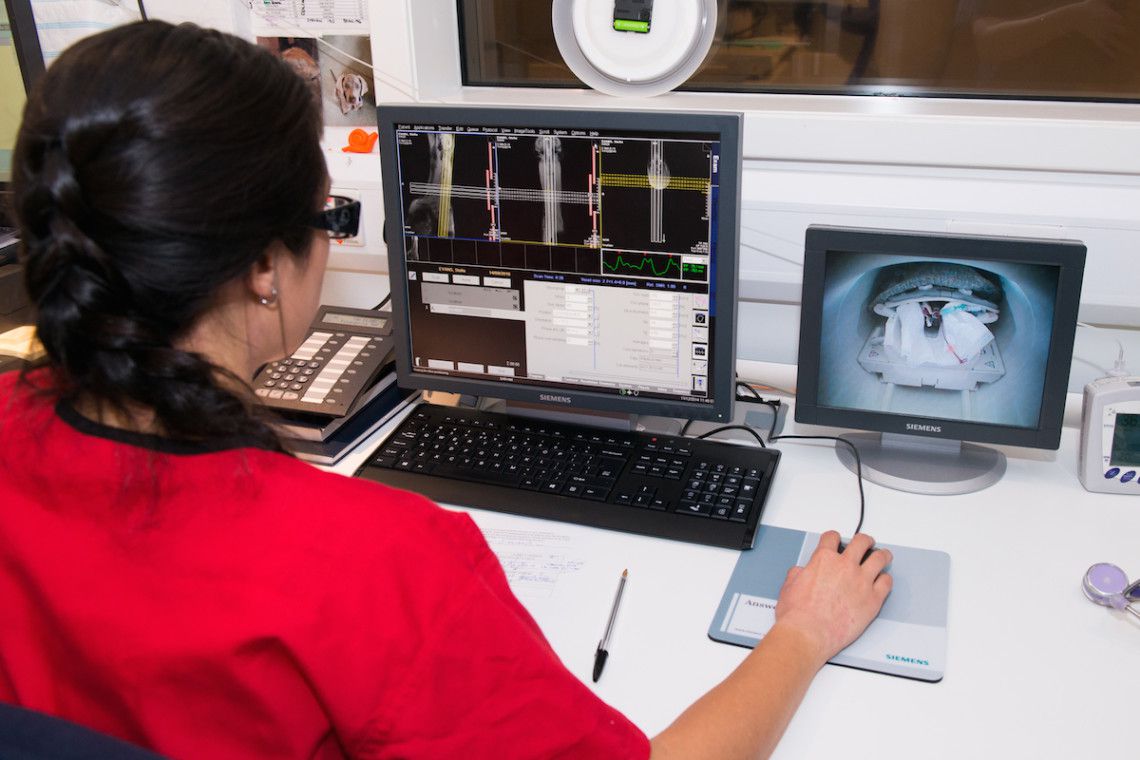

How is fibrocartilaginous emboli treated?
Fibrocartilaginous embolism is a non-surgical spinal condition unlike intervertebral disc disease which is often managed surgically, but both conditions have similar clinical signs as a result of spinal cord injury. Therefore MRI becomes essential in order to achieve the correct diagnosis. Physiotherapy and supportive therapy are the most important considerations in the rehabilitation of fibrocartilaginous embolic myelopathy. Supportive nursing care will be provided by a multidisciplinary patient care team, neurology clinicians, chartered physiotherapists and hydrotherapists. Your dog will be assessed by our specialist team of chartered physiotherapists and they will design and begin a physiotherapy and rehabilitation programme specifically for your dog. Physiotherapy plays a vital part in the treatment of animals with fibrocartilaginous embolic myelopathy, as inactivity and recumbency results in decreased joint movement, stiffness and muscle weakness and contracture which all hinder a smooth road to recovery.



What is the prognosis of fibrocartilaginous embolism?
The prognosis for recovery from a fibrocartilaginous embolism is based on the severity and extent of the spinal cord injury. More specifically, the maintenance of feeling of a painful stimulus applied to the toes (so-called, ‘deep-pain’) suggests to us that the integrity of some nerve fibres have been spared and the spinal cord has the capacity to recover. Ultimately, the rate and extent of recovery is variable and difficult to predict but can take days, to weeks or months. The majority of dogs may show signs of improvement within the first one to two weeks, whereas full recovery may take much longer. Animals are typically hospitalised following fibrocartilaginous embolism until they show signs of improvement as well as a return to voluntarily urination function, if urinary incontinence is present in the first instance.
At Fitzpatrick Referrals, we will provide you with a support team to include mobility slings and devices as well as physiotherapy and hydrotherapy, all of which can be provided on an outpatient basis through our rehabilitation service once your dog has been discharged from hospital. During your initial appointment, one of our chartered physiotherapists will assess your dog and design a programme specifically for the rehabilitation of degenerative myelopathy and will also advise you of how often appointments are required.
Although the pathophysiology of the fibrocartilaginous embolic myelopathy is not fully understood, once an animal recovers there is very little chance of recurrence.
6 minute read
In this article
